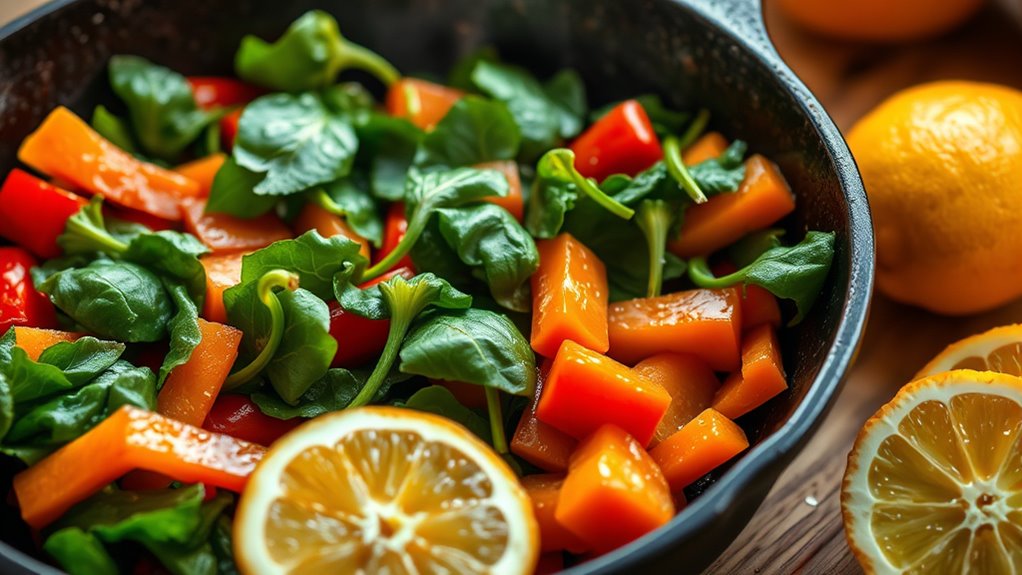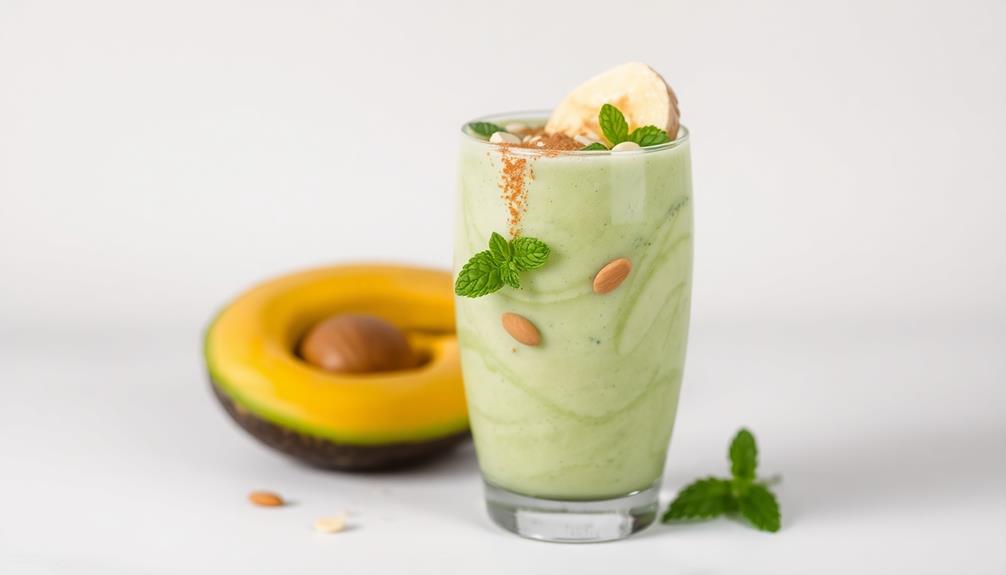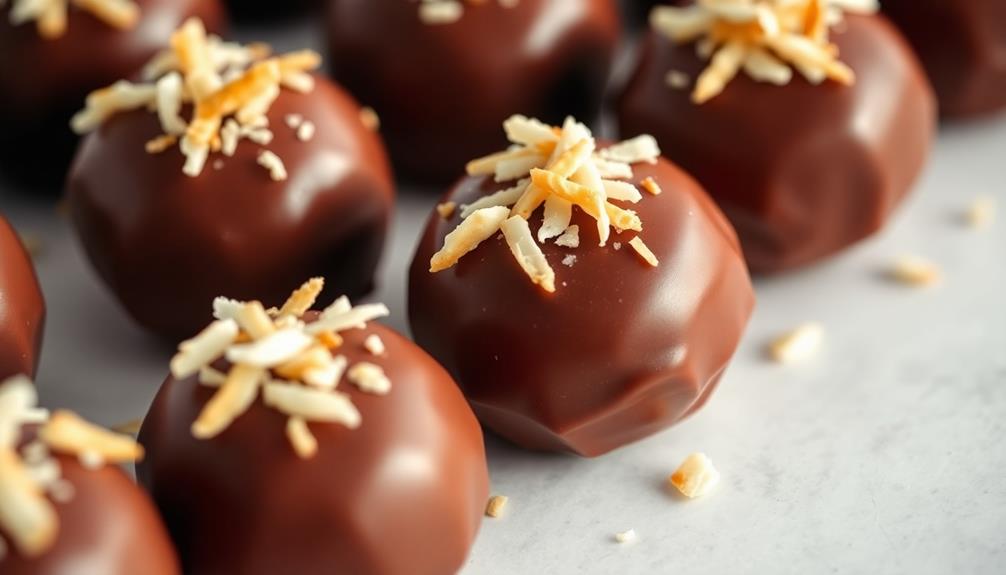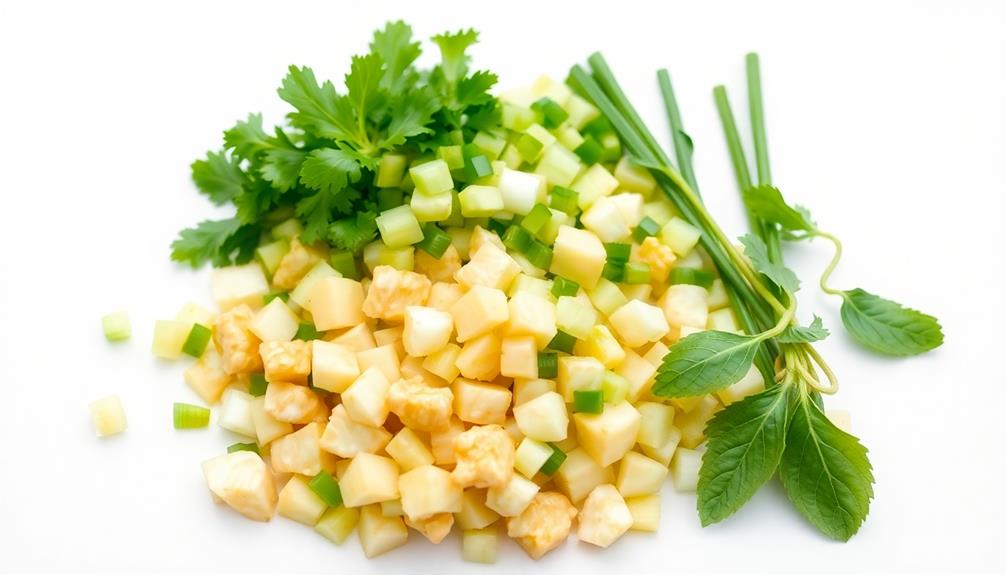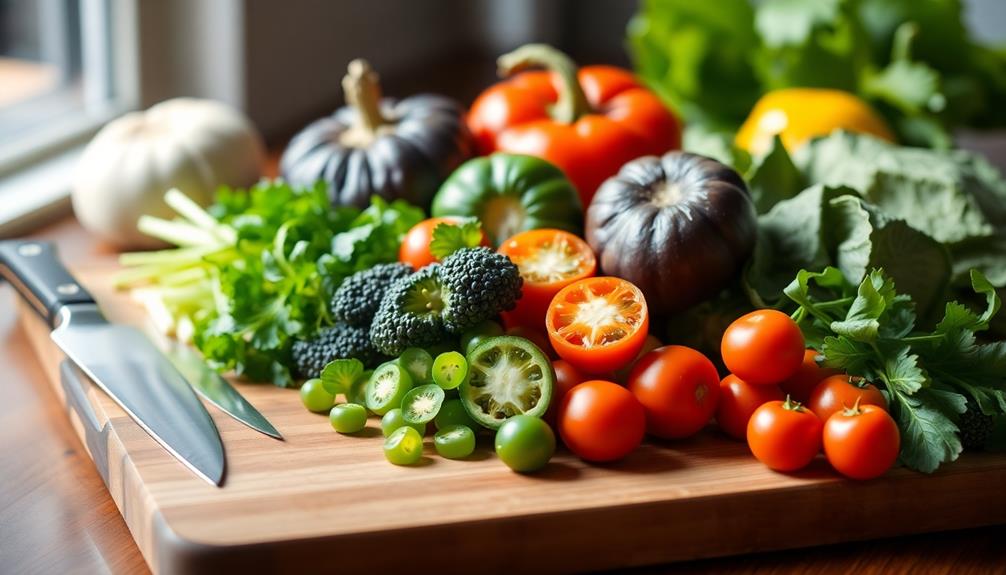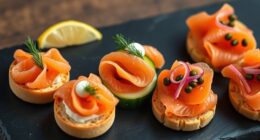Cooking with cast iron naturally increases your plant-based iron intake, as the pans leach small amounts of iron into your food. To improve absorption, pair your meals with vitamin C-rich foods like peppers, citrus, or tomatoes, which boost how much iron your body takes in. Regularly using cast iron and adding these foods can help build iron stores over time. Keep exploring to discover simple ways to maximize your plant-based iron levels efficiently.
Key Takeaways
- Cooking plant-based foods in cast iron increases their iron content through natural leaching.
- Pair iron-rich plant foods with vitamin C sources like citrus or peppers to boost absorption.
- Regular use and proper seasoning of cast iron pans enhance iron transfer and flavor over time.
- Incorporate vitamin C-rich ingredients into meals to counteract plant compounds that inhibit iron absorption.
- Consistent cooking with cast iron and vitamin C-rich foods is an effective, vegetarian-friendly strategy to build iron levels.
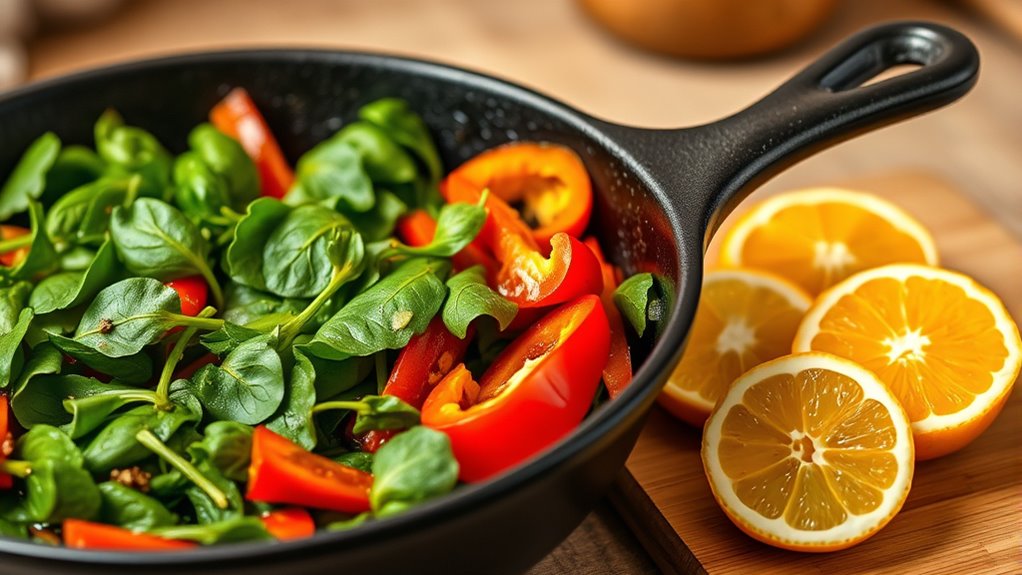
Have you ever wondered how to boost your iron intake without relying on animal products? One effective way is by cooking with cast iron cookware, which naturally increases the iron content of your meals. When you use cast iron pans, especially if they’re well-seasoned, tiny amounts of iron leach into your food, providing a non-meat way to enhance your iron levels. To maximize this benefit, focus on maintaining proper cast iron seasonings; a well-seasoned pan creates a smooth, even surface that reduces sticking and enhances flavor, all while slowly adding iron to your dishes. The more you cook with it, the more seasoned your pan becomes, and the more iron you can potentially absorb from your meals.
Cooking with well-seasoned cast iron increases iron intake naturally and enhances flavor over time.
But boosting iron absorption isn’t just about the cookware. Pairing iron-rich foods with vitamin C sources considerably improves how much iron your body absorbs. Vitamin C, or ascorbic acid, acts as a powerful enhancer by converting iron into a form that’s easier for your body to uptake. Incorporate foods like bell peppers, citrus fruits, strawberries, or tomatoes into your meals to maximize this effect. For instance, adding sliced bell peppers to a stir-fry or squeezing lemon juice over cooked greens can make a substantial difference. Combining plant-based iron sources such as spinach, lentils, or beans with these vitamin C-rich foods ensures that your body gets the most from every bite.
You don’t have to overhaul your entire diet to improve your iron intake. Simple changes like cooking your beans or greens in a cast iron skillet and finishing the dish with a squeeze of citrus can make a noticeable difference. Remember, the key is consistency—regularly cooking with cast iron and pairing your meals with vitamin C sources can cumulatively boost your iron stores over time. Also, be mindful that certain compounds in plant foods, like phytates and polyphenols, can inhibit iron absorption, but vitamin C helps counteract these effects. So, by combining these strategies, you’re actively working to improve your iron levels naturally.
Incorporating cast iron seasonings into your cooking routine and paying attention to vitamin C sources offers a practical, accessible way to build plant-based iron. It’s a simple, effective approach that empowers you to take control of your nutrition, especially if you’re leaning toward vegetarian or vegan diets. With a little planning and awareness, you can enjoy delicious meals that support your iron needs without relying on animal products, all while enhancing flavor and nutritional value in every bite. Additionally, understanding the role of technology in optimizing cooking methods can help you make more informed choices about your kitchen tools and techniques.
Frequently Asked Questions
Can Plant-Based Diets Meet All Iron Requirements Without Supplements?
You can meet your iron needs on a plant-based diet, but it’s tricky because plant-based iron has lower bioavailability, making absorption less efficient. Plant-based deficiencies are common if you don’t include iron-rich foods or enhance absorption. To boost iron intake, combine iron-rich plants with vitamin C-rich foods, which increase bioavailability. With careful planning, you can avoid deficiencies without supplements, but it requires attention to your diet’s composition.
How Long Does It Take to Build Iron Stores Using Cast Iron Cookware?
Like a slow-burning fire, building iron stores takes time. You might notice increased iron levels after a few months of consistent use, but it depends on factors like iron absorption and cooking duration. Using cast iron cookware regularly can boost your iron intake, especially when cooking acidic foods. Keep in mind, it’s a gradual process, and patience is key to effectively building iron stores naturally.
Are There Specific Plant Foods That Enhance Iron Absorption?
You can boost iron absorption by including specific plant foods in your diet. Leafy greens like spinach and kale are great sources of non-heme iron, but their absorption benefits from vitamin C-rich foods. Eating citrus fruits such as oranges or grapefruits alongside leafy greens helps your body absorb more iron. Combining these foods makes it easier for your system to utilize plant-based iron effectively, supporting your overall health.
Does Cooking With Cast Iron Affect the Taste of Plant-Based Dishes?
Imagine sizzling a colorful veggie stir-fry in your cast iron skillet, where flavor enhancement transforms each bite with rich, smoky undertones. Cooking with cast iron can subtly influence taste, adding a warm, metallic note that melds with your ingredients. You might notice slight texture changes, as some foods develop a crisp exterior or become more tender. Overall, it’s an earthy, hearty experience that deepens the character of your plant-based dishes.
Can Vitamin C Supplements Replace Dietary Sources for Iron Absorption?
You might wonder if vitamin C supplements can replace dietary sources for iron absorption. While supplements are generally safe when taken as directed, they don’t fully replicate the absorption mechanisms of natural food sources. Whole foods provide a balanced mix of nutrients, fiber, and antioxidants that enhance iron uptake. Relying solely on supplements may overlook these benefits, so it’s best to consult a healthcare professional for personalized advice.
Conclusion
Think of your kitchen as a garden, where each meal is a seed you plant. Cooking with cast iron and vitamin C is like nurturing this garden, enriching your soil with iron’s essentialness. Just as a gardener tends to their plants, you tend to your health—building resilience and strength from within. Embrace this culinary garden, and watch your well-being flourish, turning everyday cooking into a nourishing act of growth and vitality.
